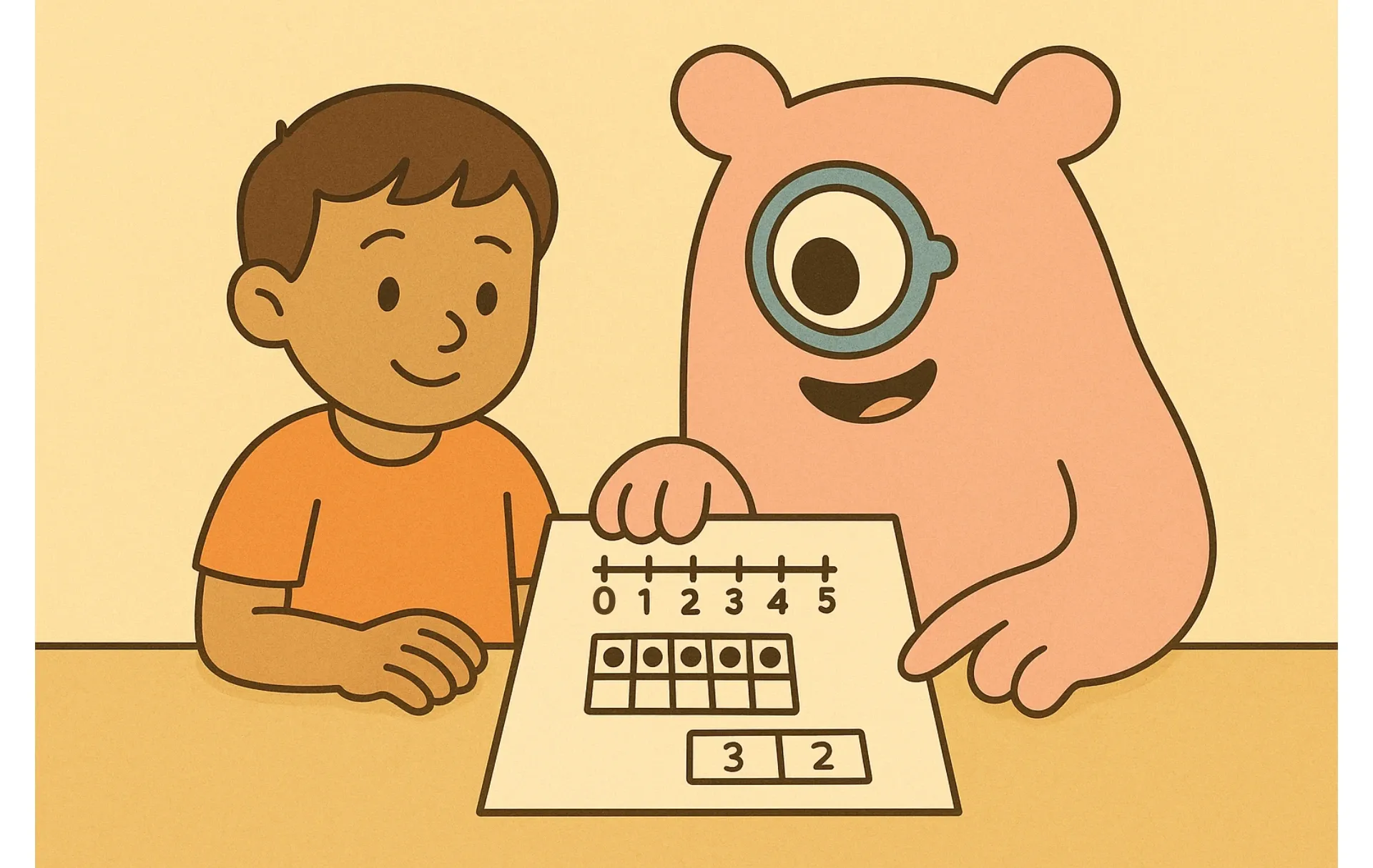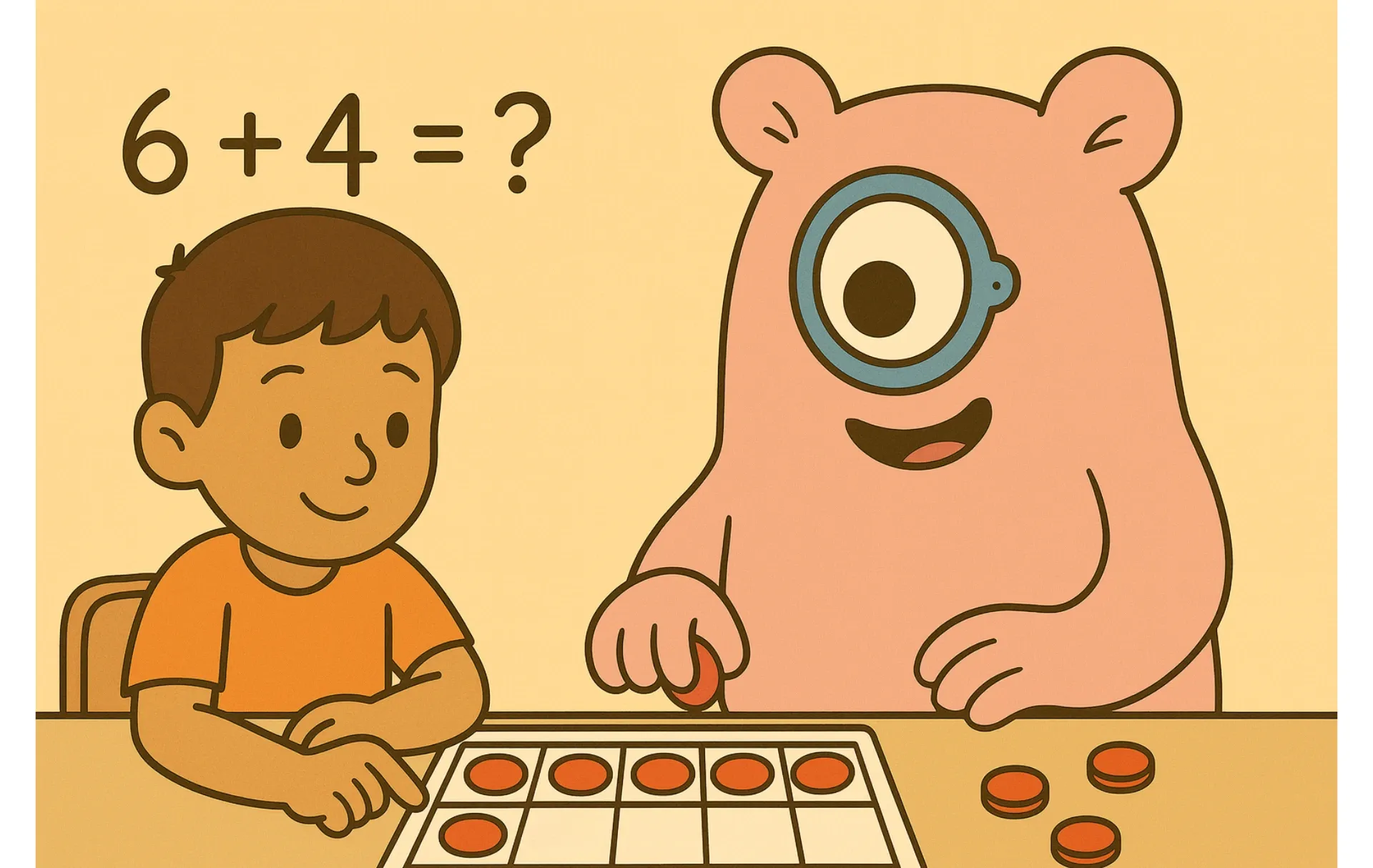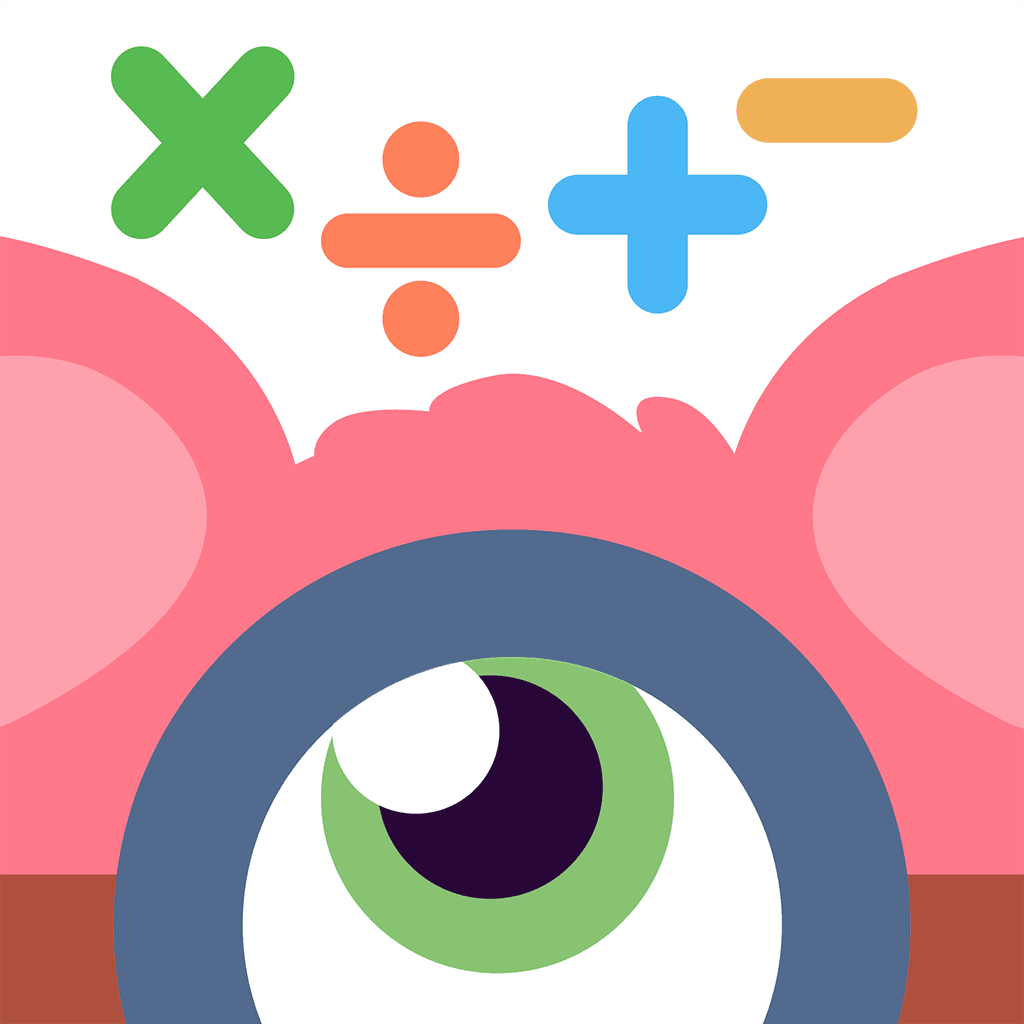7 Research-Backed Visual Math Tools for Neurodiverse Learners
TL;DR:Kids with ADHD, autism, or dyscalculia often struggle with traditional math not because they can’t reason - but because the way math is presented overloads language and working memory. Visual math tools make numbers concrete, reduce anxiety, and allow students to literally see the structure of problems. In this guide, we explore seven of the most powerful visual supports - tested in classrooms, backed by research, and loved by neurodiverse learners. Parents and teachers can start small, adapt them easily, and watch confidence bloom.
Why Visuals Unlock Math Understanding
Most elementary math instruction still leans heavily on text and symbols. Students read word problems, decode what’s being asked, hold multiple numbers in memory, and then translate that into an operation. For neurodiverse learners, each of those steps can be a bottleneck. A child with ADHD might lose track of where they are mid-problem. A student with autism might take the question too literally. And those with dyscalculia may not have a stable sense of quantity at all.
That’s where visuals help. When numbers are represented as patterns, blocks, or jumps on a line, the brain’s visual-spatial networks step in to support reasoning. Studies consistently show that dyscalculic learners often have weaknesses in visual working memory, making external visuals an essential scaffold rather than a luxury. A 2023 review found that interventions combining visual manipulatives and tech-based tools led to significant gains in number understanding.
Even simple visual-digital interventions produce measurable growth in reasoning for children with math learning difficulties. Visual learning is not an “extra” - it’s an evidence-based pathway for building number sense and problem-solving skills.
Now that we know why visuals matter, let’s look at the specific tools that bring this approach to life. Below are seven research-backed visual math supports that neurodiverse learners not only benefit from - but genuinely enjoy using.

1. Number Lines and Visual Grids
A number line is one of the simplest yet most powerful visual tools. It transforms arithmetic into movement: addition becomes a jump forward, subtraction a step back. For many neurodiverse learners, that concrete sense of space stabilizes number relationships. It externalizes what’s otherwise hidden in memory.
Teachers can mark key numbers with color or icons - a frog leaping three hops, a rocket blasting off five spaces - to make jumps memorable. For students with dyscalculia, number lines also reveal consistent spacing: the idea that every interval represents one equal unit. That builds the foundation for fractions and measurement.
Similarly, hundreds charts and grids offer visual patterns - rows of tens, diagonals of nines, checkerboard even–odd patterns - that help kids notice structure. Try letting students shade patterns (“all multiples of 5”) or play “mystery number bingo” to reinforce pattern recognition in a low-pressure way.
2. Base-Ten Blocks and Place-Value Tools
Place value is notoriously abstract, especially for kids who think literally. Base-ten blocks bridge that gap. Ten single cubes stack into one rod, ten rods into one flat, and so on - an intuitive, visual model of our base-ten system.
Students can physically trade pieces when regrouping in addition or subtraction. That “trade” makes carrying and borrowing visible. For autistic learners, the consistent colors and shapes create predictable structure; for ADHD learners, handling blocks keeps engagement active.
The Inclusive Instructional Design framework recommends exactly this kind of concrete-to-abstract transition - starting with manipulatives before fading to pictures and symbols. You can mirror this at home with LEGO bricks or coins labeled as “ones,” “tens,” and “hundreds.”
3. Ten-Frames and Dot Cards
A ten-frame - a simple 2×5 grid - looks basic, but it’s a powerhouse for number sense. Kids can instantly “see” seven as five-and-two-more, or nine as “ten minus one.” This pattern-based visualization strengthens subitizing and decomposing skills without rote counting.
For dyscalculic students, ten-frames limit cognitive load: they’re compact, consistent, and reinforce the concept of ten as a benchmark. For ADHD students, filling the frame offers closure and satisfaction -there’s a clear visual cue for “done.”
Extend the idea with double ten-frames for 20, color-coded dots for addition combinations, or virtual versions that animate grouping. Pair ten-frames with quick verbal routines (“How many to make ten?”) to connect visual and auditory processing. Over time, students internalize the structure and use it mentally when solving problems.

4. Bar Models and Tape Diagrams
Bar models, sometimes called tape diagrams, make word problems far less intimidating. They turn text into a relational picture. Instead of reading “Sara has eight apples, Tom has five more,” children draw two bars - one longer than the other - and immediately grasp the comparison.
This approach is central to Singapore Math and has strong evidence behind it. When students learn to represent story structures visually, their accuracy skyrockets. Research on schema-based instruction shows that mapping word problems to consistent visual templates helps students with learning disabilities outperform peers on comprehension and transfer tasks.
At home, you can make bar models tangible with paper strips or building blocks. Label the parts, cover the unknown with a question mark, and let your child reason it out before touching numbers. Visualizing relationships is often half the battle.
5. Visual Organizers, Checklists, and Math Journals
Visual math tools aren’t only for computation - they also support executive functioning. Many neurodiverse learners struggle to plan multistep work or remember what to do next. Visual organizers, flowcharts, and “math journaling” pages turn invisible mental processes into visible sequences.
A problem-solving mat might include boxes for “What I know,” “What I need to find,” “Plan,” “Work,” and “Check.” This structure mirrors the steps of metacognitive routines that researchers link to improved problem-solving and self-regulation. For ADHD students, the checklist format functions as an external working memory - they can literally see where they are in the process.
You can create these at home using sticky notes on a whiteboard or digital templates. Encourage kids to color-code steps or draw small icons for “plan” and “check.” These small cues give independence and reduce the need for adult reminders.
6. Interactive Digital Visual Tools
Technology brings visual learning to life. Virtual manipulatives, geometry sketchpads, and math games transform static pictures into interactive experiences. In these spaces, kids can drag, rotate, and experiment - crucial for maintaining focus and curiosity.
The meta-analysis found digital interventions particularly effective for students with mathematical learning difficulties because they merge multiple modes - visual, auditory, and kinesthetic - while offering immediate feedback.
For example, a child using a virtual fraction bar can slide pieces together until the whole bar is full, instantly grasping equivalence. Platforms like GeoGebra, Desmos, or Monster Math provide this sort of responsive environment. Just be mindful of sensory load - muted colors and limited motion help some neurodiverse learners stay regulated.
7. AI-Enhanced and Multimodal Visualization Tools
A new wave of tools goes beyond static visuals. Systems such as the Interactive Sketchpad let learners draw their thinking while AI interprets and provides real-time visual feedback. Similarly, Math2Visual can automatically convert a text-based word problem into a diagram.
For autistic or dyscalculic students who find translating language into pictures challenging, this is a game-changer. They can focus on reasoning, not decoding. While these technologies are still emerging, they reflect an exciting direction - adaptive visual supports that meet students where they are.
Putting It All Together: Tips for Parents and Teachers
The most effective visual learning environments share a few traits: clarity, consistency, and gradual release. Here’s how to integrate these tools smoothly:
- Model before expecting independence. Sketch the bar, place the blocks, or walk the number line yourself first. Thinking aloud demystifies the process.
- Encourage creation, not perfection. The goal is for kids to represent ideas, not produce neat artwork. Even stick figures or quick sketches build understanding.
- Use the CRA progression. Move from Concrete → Representational → Abstract. Start with manipulatives, then pictures, then numbers. This flow supports concept transfer.
- Personalize sensory input. Simplify visuals for students prone to overload. For seekers, add motion or sound cues sparingly to sustain interest.
- Revisit visuals across topics. Use number lines for fractions, bar models for algebra, or base-ten blocks for decimals - familiar visuals ease transitions.
- Fade scaffolds gradually. As confidence grows, invite learners to visualize in their heads, not on paper. Independence is the ultimate goal.
Common Myths About Visual Math
“Visuals are for little kids.”
Not true. High-school geometry, physics diagrams, and professional engineering sketches all rely on visual reasoning. What changes is complexity, not usefulness.
“They’ll become dependent on aids.”
When used intentionally, visuals build internal structure. Fading them gradually teaches students to form mental imagery - the opposite of dependence.
“Tech distracts neurodiverse kids.”
It can - but when chosen wisely, technology channels curiosity rather than scatters it. The key is purposeful interactivity, not passive animation.
FAQs
Q: Are visual tools effective for all neurodiverse profiles?
Yes, though benefits vary. Visual scaffolds help ADHD learners stay organized, assist autistic students in decoding abstract language, and provide concrete anchors for dyscalculia.
Q: When should we start using them?
From early childhood. Even preschoolers can explore ten-frames or counting boards. Early exposure predicts later success with symbolic math because it builds spatial-numerical mapping.
Q: Which is better - digital or physical?
Both. Physical manipulatives engage touch and proprioception; digital ones allow repetition and experimentation. The best approach blends the two across lessons.
Q: What if a child resists drawing?
Offer choices: stickers, magnetic shapes, or online manipulatives. Emphasize that mathematicians and engineers all sketch ideas - it’s a sign of mastery, not immaturity.
Final Thoughts
Visual math tools make thinking visible. For neurodiverse learners, they are not add-ons but lifelines - reducing cognitive overload, building structure, and nurturing confidence. Whether it’s a paper ten-frame at home or an interactive app in class, every visual helps a child see patterns that once felt hidden.
Start with one small step this week: hang a number line near your child’s study space or draw a bar model together. Watch how much calmer problem-solving becomes when math finally looks like something they can see and touch.
References
- Fatwana H., Dasari D., Juandi D. (2023). The Use of Learning Aids for Dyscalculia: Systematic Literature Review.ResearchGate.
- Mohammed S. G. A., Kadah S. M. S., Khattab A. N. (2024). Exploring the relationship between dyscalculia and working memory in Egyptian children.Egyptian Journal of Otolaryngology.
- Benavides-Varela S. et al. (2020). Effectiveness of digital-based interventions for children with mathematical learning difficulties.ScienceDirect.
- Azuka C. V., Wei C. R., Ikechukwu U. L., Nwachukwu E. L. (2024). Inclusive Instructional Design for Neurodiverse Learners.ResearchGate.
- Fuchs, L. S., Fuchs, D., Finelli, R., Courey, S. J., & Hamlett, C. L. (2004). Expanding schema-based transfer instruction to help third graders solve real-life mathematical problems. American Educational Research Journal, 41(2), 419–445. SageJournals
- Chen S., Lee J., Liang P. (2025). Interactive Sketchpad: An Interactive Multimodal System for Collaborative Visual Problem-Solving.arXiv.
- Wang J., Rutkiewicz A., Wang A. Y., Sachan M. (2025). Generating Pedagogically Meaningful Visuals for Math Word Problems.arXiv.
